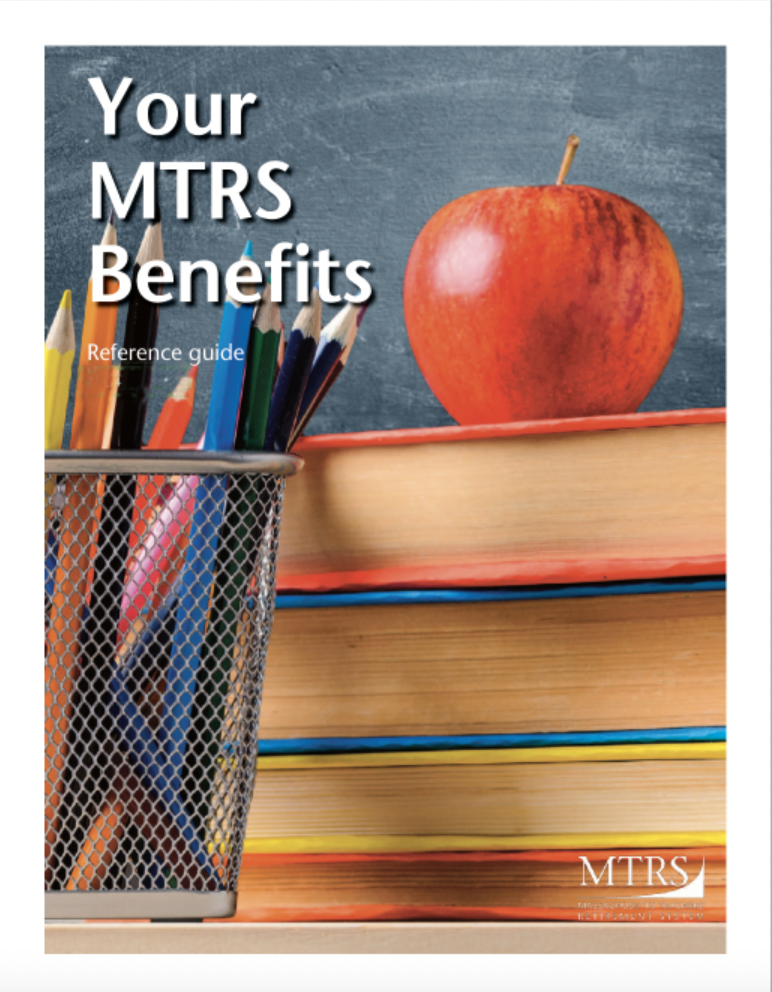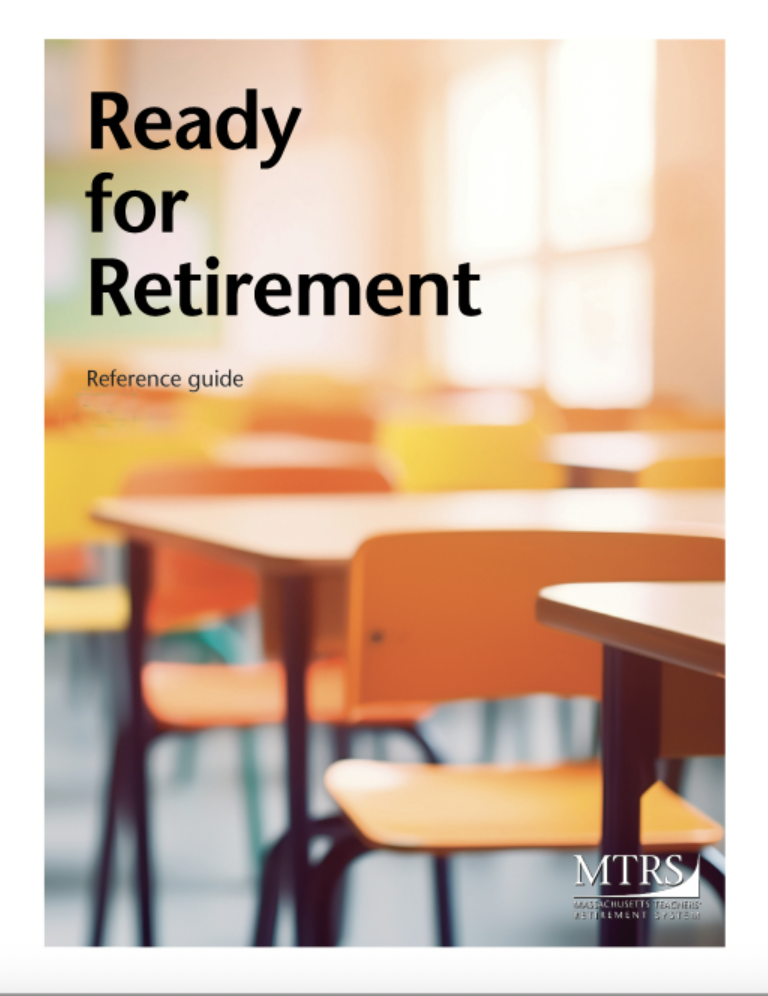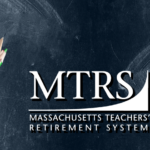Reminder to members: As described below, there are time and earnings restrictions on re-employment with a Massachusetts public employer. However, there are no restrictions on employment in the private sector, public employment in another state or employment with the federal government.
Reference: PERAC memos, including an interactive earnings calculator
Overview
Pursuant to Massachusetts General Laws c. 32, § 91, there are limitations on the amount of time that a rehired retiree may work and the amount of money that he or she may earn.
However, pursuant to M.G.L. c. 32, § 91(e), the earnings limitations on re-employment of retirees in Massachusetts public schools are eased in the event of a “critical shortage” in a position as determined by the Department of Elementary and Secondary Education (ESE). The ESE has adopted regulation 603 CMR 7.14(13)(b), allowing the Commissioner of Elementary and Secondary Education to deem that a district has a “critical shortage” upon the request of a superintendent and demonstration that the district has made a good-faith effort to hire non-retirees and has been unable to find them. The “critical shortage” application process is similar to that for requesting a waiver for certification. (School districts wishing to take advantage of the “critical shortage” provision of M.G.L. c. 32, § 91(e) are advised to consult with the Department of Elementary and Secondary Education for guidance on the certification requirements for re-employed retirees.)
In brief:
Post-retirement employment restrictions for Massachusetts public retirees | When NO critical shortage | When a critical shortage IS declared by ESE |
| All MTRS Retirees | Retirees under Regular formula | Retirees under RetirementPlus formula |
| 1) Time limitation: 1,200 hours in a calendar year. | Applies | Waived | Waived |
2) Earnings limitation (for superannuation retirees):
On a calendar year basis, a rehired retiree's post-retirement earnings cannot exceed the difference between the salary being paid for the position from which the member retired, and the amount of his or her annual pension. After the member has been retired for at least one full calendar year (one full January-through-December year), this earnings limit is increased by $15,000 (see below).
Date of retirement / Date eligible to earn additional $15,000- 1/1/2022-12/31/2022 : On 1/1/2024
- 1/1/2023-12/31/2023 : On 1/1/2025
- 1/1/2024-12/31/2024 : On 1/1/2026
| Applies | Waived | Applies for first two years of member's retirement; waived thereafter |
3) Separation from service:
If returning to the same employer from which the member retired, 60 days. Exception: Presently, this particular restriction does not apply if the member retired either at age 62 or older or at the maximum benefit amount of 80 percent of his or her allowable salary average. | Applies | Applies | Applies |
FAQs
The school district that wishes to rehire a retiree to work beyond his or her post-retirement time and earnings limitations has applied for a critical shortage waiver with the Department of Elementary and Secondary Education (ESE). How will the rehired retiree know whether the critical shortage waiver is approved?
Once the ESE completes their review of the critical shortage waiver application, they will send written notice of their decision to the school district and mail a copy of the decision to you. Please be advised that you should not assume that you are working under a critical shortage waiver unless you have received a copy of the approval from the ESE.
How does the MTRS calculate the amount that I can earn?
Until you have been retired for at least one full calendar year (meaning one full January-through-December year), the amount that you can earn is equal to the difference between the annual amount currently being paid for the position from which you retired, and your annual pension. After you have been retired for at least one full calendar year, this limit is increased by $15,000.
For example: Trudy Teacher retires on June 30, 2022, with an annual retirement allowance of $48,000. The position from which Trudy retires, based on her step and education level, will pay $65,000 per year in the fall of 2022, and will remain at that amount for the next several years. She will return to teaching on September 1, 2022, and continue to work for the next several years (without exceeding the limit of 1,200 hours per calendar year). Trudy’s earnings limitations for the next few years are as follows:
|
For the last four months of 2022 (September 1 through December 31, 2022), Trudy can earn $17,000 |
| Current annual salary for position from which Trudy retired* | $65,000 |
| – Trudy’s annual retirement allowance | – $48,000 |
| Amount of Trudy’s allowable earnings** for remainder of 2022 | $17,000 |
* “Salary” includes earnings such as regular longevity, athletic coaching and contracted stipends. It does not include annuity/insurance premiums and other fringe benefits.
** “Earnings” include compensation in any form including annuity/insurance premiums and other fringe benefits.
|
For all of calendar year 2023 (January 1 through December 31, 2023), Trudy can still earn a total of $17,000 |
| Current annual salary for position from which Trudy retired* | $65,000 |
| – Trudy’s annual retirement allowance*** | – $48,000 |
| Amount of Trudy’s allowable earnings** for calendar year 2023 | $17,000 |
Beginning January 1, 2024, after she has been retired for one full calendar year, Trudy can now earn an additional $15,000 for calendar year 2024 and every calendar year thereafter |
| Current annual salary for position from which Trudy retired* | $65,000 |
| – Trudy’s annual retirement allowance*** | – $48,000 |
| Standard earnings limitation for calendar year 2024 | $17,000 |
| + $15,000 (per pension reform legislation of 2011) | + $15,000 |
| Amount of Trudy’s allowable earnings** for 2024 | $32,000 |
| *** Because cost-of-living adjustments must be granted by the Massachusetts Legislature on an annual basis, we have not included any COLA amounts in Trudy’s annual retirement allowance figures in these examples. If, however, the Legislature approves a 3% COLA for fiscal years 2023 and 2024, and the COLA base remains $13,000, then Trudy’s annual retirement allowance for calendar year 2023 would be $48,195 (an additional $32.50 per month for the six months of July through December, for a total increase of $195), and her allowable earnings for calendar year 2023 would decrease by $195, to $16,805. Likewise, for calendar year 2024, her annual retirement allowance would increase to $48,585 (an additional $32.50 per month for January through June, and an additional $65.00 per month for July through December, for a total increase of $585), and her allowable earnings for calendar year 2024 would decrease by $585, to $31,415. |
For an interactive worksheet that both the employer and the rehired retiree can use to determine the earning limitations, please see the Public Employee Retirement Administration Commission’s Post Retirement Earnings Calculator.
I am a disability retiree. Am I subject to any additional post-retirement earnings limitations?
Yes—whereas non-disability retirees are subject to limitations on their post-retirement Massachusetts public sector earnings only, disability retirees are subject to a limit on the total amount of their post-employment earnings, from both public and private sectors.
Pursuant to M.G.L. c. 91A, a disability retiree’s annual post-retirement earnings—from both the private and public sectors—when added to his or her disability retirement allowance, cannot exceed the amount of salary that would have been payable to the retiree had he or she remained in service in the grade held at the time of retirement, plus $15,000. If this earnings limitation is exceeded, the retiree’s allowance will be withheld until the overpayment is recovered by the MTRS.
“Salary” means, essentially, the type of payments that constitute the ‘regular compensation’ used in the calculation of your retirement allowance, including but not limited to your contractual salary, longevity, and eligible extra duty stipends, including stipends for athletic coaching. “Earnings” include compensation in any form, including annuity/insurance premiums and other fringe benefits, and implies some labor, management or supervision in production of the income and not income derived merely from ownership of property.
It is the retiree’s responsibility to advise the person responsible for paying his or her compensation that he or she is a public retiree and, as a result, his or her post-retirement earnings in the public sector are limited.
How is the “salary being paid” for the position from which the rehired retiree retired determined?
If, in the position from which the retiree retired, he or she:
- was covered by a collective bargaining agreement in the position from which you retired, the “salary being paid” is the current annual contract rate for the retiree’s step and education level on the salary schedule.
- was not covered by a collective bargaining agreement (e.g., the retiree was an administrator or other educator covered by an individual contract), then the “salary being paid” is your last annual salary prior to retirement, plus an inflation factor equal to the Consumer Price Index (CPI-W) as certified by the Commissioner of Social Security, unless the retiree can provide sufficient evidence for the MTRS to reliably determine what you would have earned in a year after his or her retirement. An example of sufficient evidence would be a written, contemporaneous policy showing that the class of employees of which you would have been a member had he or she not retired, would all receive the same raise in a given year.
For example, if an administrator retired in 2018 with a final salary of $125,000 and the district wished to rehire her in 2019, for the purposes of determining the “salary being paid” for that position, the MTRS would apply the following formula:
Salary at retirement + inflation factor = “salary being paid”
$125,000 + 2.8% (the January 2019 COLA factor) = $128,500
NOTE: “Salary” means, essentially, the type of payments that constitute the ‘regular compensation’ used in the calculation of your retirement allowance, including but not limited to your contractual salary, longevity, and eligible extra duty stipends, including stipends for athletic coaching.
For part-time positions…
If you worked part-time in your last year of employment, the “salary being paid” for the position from which you retired is, likewise, your former part-time equivalent of the current full-time salary. For example: Mary Music works on a 50%-of-full-time basis and retires June 30, 2019. For the 2018-19 school year, she earned $37,000, or 50% of the full-time salary of $74,000.
|
School year 2019-20 full-time salary for Ms. Music’s former position |
|
$76,000 |
| x |
Ms. Music’s former part-time basis (50%) |
x |
50% |
|
|
“Salary being paid” for Ms. Music’s position in 2019-20 on a 50% basis |
|
$38,000 |
| – |
Ms. Music’s annual gross pension |
– |
$29,250 |
|
|
Ms. Music’s allowable earnings for the rest of calendar year 2019 |
|
$8,750 |
|
Beginning January 1, 2021, Ms. Music can earn an additional $15,000 per calendar year. |
|
|
Ms. Music’s full-time equivalent salary is used to calculate her final salary average; this increase the annual benefit she will collect the rest of her life, but limits or eliminates her ability to work in the public sector in retirement.
If the amount earned or the number of hours worked will exceed the limitations, what are my options?
In either case, the retiree has two options. If the retiree wishes to work in a position that will exceed either the time or the earnings limitation, and he or she has not been approved for a critical shortage waiver, he or she may:
a) Request a temporary cessation of pension payments by notifying the MTRS in writing to waive his or her retirement allowance for the period of employment. A retiree who has waived his or her retirement benefits is not subject to the time and earnings limitations and is not required to make contributions to the pension system. Stopping a retiree’s pension payments can affect the administration of his or her health insurance benefit, however, so it is a good idea for the retiree to discuss the impact of waiving the retirement benefit with his or her local insurance coordinator before making this decision.
Upon completion of the employment, the retiree may resume receiving his or her retirement allowance at the same level of benefits he or she had before waiving the allowance, plus any cost-of-living adjustments passed by the Massachusetts Legislature. (In other words, the retiree cannot recoup his or her retirement benefits for the period during which he or she waived them.)
b) Return to active membership in the MTRS and, in effect, “unretire,” if he or she agrees to certain terms and conditions. Pursuant to M.G.L. c. 32, § 105, in order to “unretire,” the retiree must pay back to the retirement system the total pension benefits received while retired, plus interest at the buy-back rate (currently, 3.5%). Moreover, the retiree must be employed in a full-time position subject to membership in the MTRS, for at least five full years from his reinstatement date in order to accrue additional retirement benefits. For more information, please see:
Is it true that retired teachers can “unretire”?
Yes, a member may be reinstated, provided he or she agrees to certain terms and conditions. Please see Question 5(b) directly above.
Can a retired teacher or administrator who waives retirement benefits and then accepts a full-time, paid position, later have his or her retirement allowance reinstated for 1,200 hours during any calendar year?
No. The law does not permit retirees who waive their retirement benefits and then accept public employment to supplement their incomes by the device of reinstating their retirement allowances for the 1,200-hour period during each calendar year. Opinion of the Attorney General, February 2, 1979.
Whose responsibility is it to keep track of the number of hours worked and money earned by the retirees?
It is the responsibility of the rehired retiree to provide his or her employer and the treasurer of the city or town (or the source responsible for paying the retiree) with a certification of the length of time worked and the amount of income earned in a given calendar year. If either the period worked or the income earned exceeds the allowable amount, the rehired retiree can no longer be employed and the excess earnings must be returned to the appropriate treasurer or entity responsible for paying the retiree. In the case of excess or improper retirement payments, the MTRS has the authority either to require repayment or to offset the amount received against future retirement payments.
If a teacher or administrator is rehired as a “consultant,” do the restrictions on post-retirement employment still apply?
Yes. The restrictions set forth above apply to both employees and non-employees; except for services performed for the general court as a non-employee, the law makes no distinction between employees and non-employees. Accordingly, the restrictions on hours and earnings apply if a teacher or administrator is receiving a retirement allowance and is being paid as a “consultant,” independent contractor, or someone whose regular duties require their time to be devoted to the service of the Commonwealth.
Are “leased employees” subject to these restrictions?
Yes. M.G.L. c. 32, § 91(a) prohibits all retirees from “render[ing] service” to any public employer, including school districts. Section 91(b) provides a general exception to this prohibition, allowing post-retirement employment for up to 1,200 hours in any calendar year, and limiting annual earnings to the difference between the retiree’s retirement allowance and the salary being paid for the position from which he/she retired. The Massachusetts Teachers’ Retirement System (MTRS) interprets “render[ing] service” to include work under an employee leasing arrangement, and thus such arrangements are subject to the restrictions of section 91.
What is an employee leasing arrangement?
An employee leasing arrangement is one where one company (the “Leasing Company”) loans or hires out its employee to another (the “Client Company”). The “leased” employee is paid by the Leasing Company and may report occasionally to the Leasing Company. While working for the Client Company, however, the employee and his/her work are directed and controlled by the Client Company and the employee typically uses the Client Company’s work space and equipment to accomplish his/her work. A common example is a “temp” agency that supplies temporary workers. Since the law has often regarded “leased” employees as employed by both the Leasing Company and Client Company, it is clear that a “leased” employee “renders service” to the Client Company.
In the education context, some companies supply interim school administrators under “leasing” arrangements, and these administrators are directed in their day-to-day activities by the school district. Of course, superintendents, assistant superintendents and principals are by law appointed, employed and directed by their respective superiors (ultimately, the school committee). General Laws c. 71, §§ 59 and 59B. Thus, the System regards “leased” employees in such positions to be “render[ing] service” to the district and thus subject to the limitations of section 91(b).
Will I be subject to Social Security deductions? MTRS retirement deductions?
No, you will not be subject to either Social Security or MTRS contribution deductions. If a retired teacher or administrator returns to work in a Massachusetts public school, he or she is considered a “rehired annuitant” by the Internal Revenue Service, and therefore exempt from mandatory Social Security coverage. For more information, see the IRS web page on Rehired Annuitants as well as the Social Security Administration’s web page on Rehired Annuitants .
Where can educators get information on maintaining their teaching certification?
See the Department of Elementary and Secondary Education’s website for information on renewing your license.













